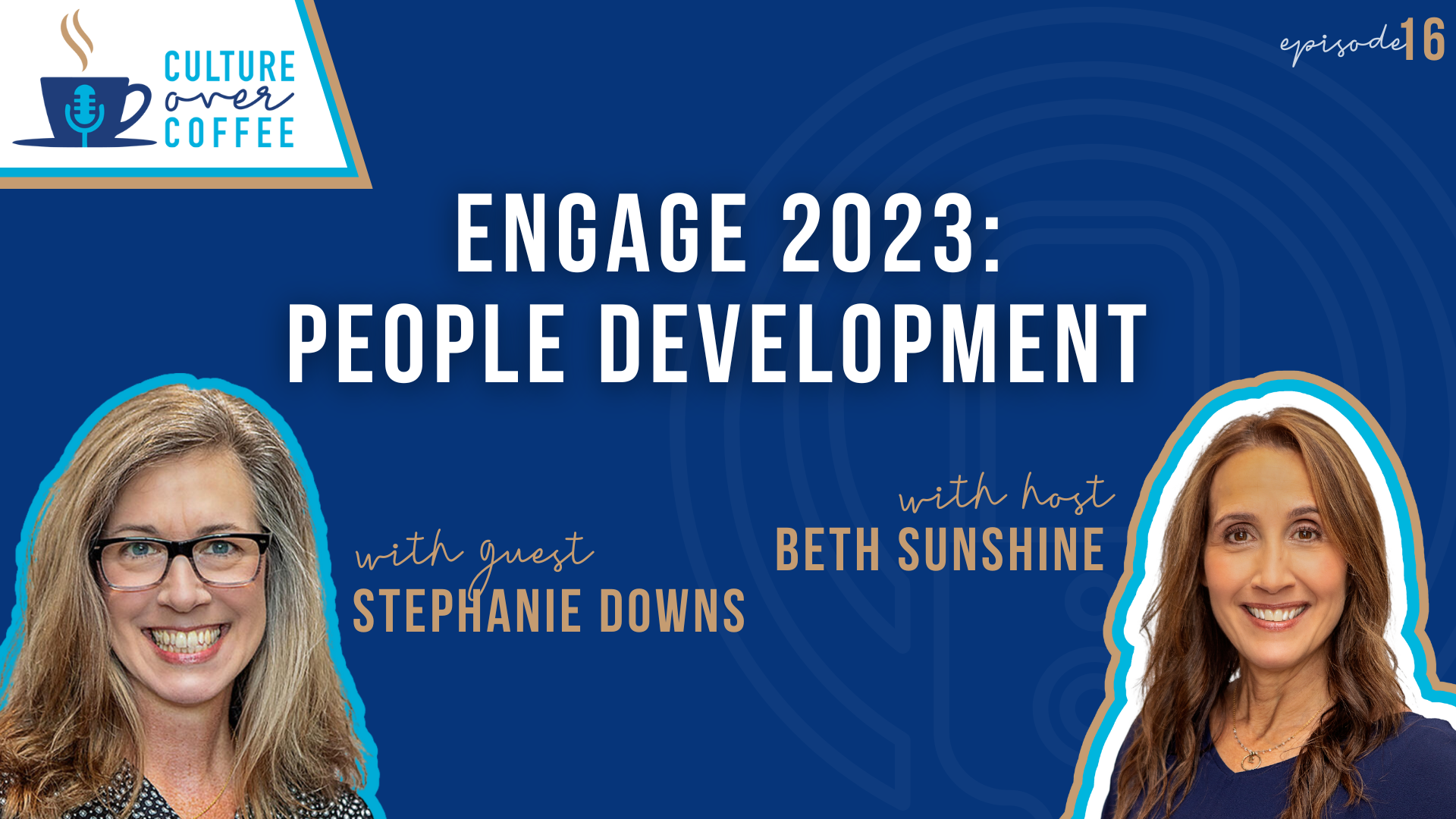
In this episode, we continue the exploration of our latest company culture and employee engagement report, ENGAGE 2023, by looking at the findings as they relate to People Development.
In this section of the report, we asked questions related to Employee Growth, Recognition, and Feedback.
Joining Beth to discuss and contextualize it all is the great Stephanie Downs, SVP/Senior Consultant at The Center for Sales Strategy.
Stephanie brings so many awesome insights to the table, like:
-
How not focusing on developing your people increases the risk of losing top talent
-
Why Feedback and Recognition are not the same things, but should both be occurring on a regular basis
-
And, lastly, how developing your people begins with understanding their natural talents and what truly motivates them.
Lack of Development Torpedoes an Employee’s Sense of Loyalty
“So, first of all, I did prepare some questions for you,” Beth says. “But I want to start just by asking: were there any stats or findings that jumped out to you when thinking about people development and reading through the report?”
“I know we're going to talk about various of them,” Stephanie says. “But there were three that stood out to me:
-
Diminishing Feedback: “[There was a] difference of percentages in feedback given to new employees versus those that have been there over three years. For new employees, 78% felt like they got feedback on a frequent basis where, if you'd been there over three years, those numbers dropped drastically, which was a little surprising for me.
-
Unsure Expectations: “The other one that really stood out to me too was that over 50% of people are unsure what is expected of them. I had an ‘oh my goodness’ moment when I read that number; I have to admit, it shocked me a bit.
-
Feeling Undervalued and Underappreciated: “And then the last one was that 36% of managers feel undervalued or underappreciated. And 24% of frontline employees felt undervalued or underappreciated. That made me sad.”
“Yeah, I can see why,” Beth says. “Because if you feel unimportant or undervalued, it's hard to show up day after day and really give it your all...Those are all very interesting.
“I was a little surprised by something you just mentioned. Just, in general, how many people feel as though they're lacking something, they're feeling undervalued or lacking feedback. And very specifically, what jumped out to me was how many people said that their company is not focused on development.
“As you said, nearly half of the respondents said that their company is only somewhat focused or not focused at all on employee development.
“You work with sales leaders all the time. Right. You are very intentional about helping them develop their people, improve their performance. So, I'm curious; I know that number surprised you, but what do you think that means for these organizations?”
“It's such a missed opportunity for so many reasons,” Stephanie says. “In our environment, and it really has been this way for a couple of years, finding people is so difficult, and recruiting people is so difficult. And I feel like when you have people on your team that are feeling that way and that percentage being so high, you're at risk of losing people, you're at risk of having turnover. You're at risk of having regrettable turnover.
“You know, sometimes, if you have non-performers, that's one thing. But you don't want to lose your top people and your top performers. That's not a good thing. There are a lot of consequences to that.
“But if people don't feel like they're being developed, they're not going to be as loyal. Culture is going to be impacted. I mean, it's obviously a direct sign of employee engagement and the lack thereof. Revenue is not going to grow at the rate that it should be growing. You may lose key, key accounts or key clients, or there may not be growth related to key accounts if people aren't feeling like they're being invested in by their leaders from their company.”
“You paint a scary picture,” Beth says. “And I don't disagree with anything you said. I think the human condition is always a desire to grow. People want to grow; they want to improve, they want to be better than they were yesterday.
“And companies owe it to them to help with that.”
Employee Development Looks Different for Different People
“So how can companies do a better job?” Beth asks. “How can they invest in their people? How can they give them the development opportunities that they're obviously really craving?”
“It really starts with understanding the individual,” Stephanie says. “It’s understanding what's important to the person.
“Because what's important to you from a development standpoint and what's important to me, may be two different things, right? There may be some overlap, but not always. We need to understand that.
“We need to know if they want more training and more development opportunities or professional growth. Maybe they want to grow in their position within the company. Maybe there's a learning opportunity they need, but we need to uncover that.
“We need to know that and what motivates them. All of those pieces. Because then as a leader, you can focus on that. You can recognize that, support them, create growth plans for them, and help them accomplish what it is they're trying to accomplish.
“But I think it starts with a conversation about talents.”
“Good point,” Beth says. “Employee development's going to look different for different people, right? I find that really interesting.”
“Well, there's skills development and there's experience development,” Stephanie says. “Even development on how salespeople are working with accounts in the field. I mean, there's a lot of different aspects to that, but there's also the motivation side too.
“You're likely to get more out of somebody if you really understand what it is they're trying to accomplish.”
The Difference Between Feedback and Recognition
“Now, you mentioned feedback earlier and your surprise at that number,” Beth says. “I want to make sure we spend a little time on that.
“I am a sucker for good feedback. You actually give some of the best performance feedback I've ever seen, which is why I especially wanted you to do this segment. And, you know, I've actually included you in a number of situations in my career, because I wanted you to provide feedback.
“I'm really interested to see what you think of those findings. We learned that 55% of the people who took the survey reported receiving specific and meaningful performance feedback regularly and regularly.
“55%. I mean, that's you, but maybe not the person next to you. One out of every four people only receive feedback four times a year. And more than 5% said that they never receive meaningful feedback at all.
“So, I need your help here. Can you help us understand the difference, first of all, between feedback and recognition? Because they're not the same thing.”
“I will answer that question, but can I also start with, if you're only giving feedback one to four times, don't even bother!
“Okay, so the difference between feedback and recognition.
“Feedback is geared to performance or geared to behaviors. It’s given or geared to the work that's being done.
“And I'll give you an example of that. If a manager is in the field with the salesperson, they're observing the call and they're there to observe, not to participate in the call. When you leave the meeting, you download, right? You have a debrief on what happened, what went well, what went well. That's feedback. Those are the, the feedback side of things.
“But recognition, think about it more in terms of the ‘pat on the back’ or the ‘job well done’ or celebrating wins. If you're a sales leader and you're running a sales meeting on a weekly basis and you start the sales meetings with wins, right? That's recognition.”
Beth says, “So, if I share someone's name and say, ‘so-and-so made a big sale this week,’ that's not feedback.”
“That's recognition,” Stephanie says.
“I love your example about going in the field and afterwards coming out of that, doing that debrief,” Beth says. “I like the way you said what went well more than once. Because I know that's your technique.
“You think about what went well. What else went well? And then what else went well? Because we want to be really heavy handed, helping people think about what they did well so they can do it again. I like the way you slipped that in. Any other tips? Anything you can think of that managers and leaders can do to just up their game here?
“Yeah,” Stephanie says. “Frequency matters.
“We need to do it often. We need to be consistent. We need to actively look for those opportunities. But it also needs to be specific.
“Saying, ‘great job on the call today,’ is all good and fine, but that's not good enough. You need to be specific in the feedback. Something like, ‘when you were building rapport with that prospect, here's what I observed that you did so well with.’
“You need to be very specific, but it also needs to be sincere. It can't just be, ‘I know I should be saying something, so I'm going to say something.’ It's has to be genuine. They have to know that you're doing this for them, to help them get better. It has to be meaningful to them and not flippant.
“And it needs to be in the moment. If you observe something, you should address it. You don't need to wait a week to provide feedback or two weeks. It's not as meaningful. It doesn't meet any of those criteria actually at that point.”
Beth says, “So, the annual performance review where someone hears, ‘so six months ago....’ That’s not effective.”
“Yeah,” Stepanie says. “And I understand that there has to be performance reviews on an annual basis. Let me start by saying that. I understand that, but that's not feedback.
“That's more of an HR function of an employee review.
“Feedback is daily or in the opportunities. It should be on a consistent basis. It's not one to four times a year.”
“We've painted a good picture, of what feedback should be and, and how it can be beneficial,” Beth says. “I once heard someone say that it was kind of like an athlete who watches a game tape or film after a practice. They're able to see what they did well so they can do more of it, do it better. You can't do that when you're on the field. I think it's the same thing here.”
The Five to One Ratio of Feedback
“One of the questions we asked on this survey was simply, ‘do you get enough feedback?’” Beth says. “You know, whether it's one a year or 10 times a year or every day. Like, do you get enough?
“And what we learned is that 76% of people report that they do receive enough feedback from their manager. I found that promising.
“Now, of course, my mind probably did what yours did, which is thinking that 24% of the people, or one out of four, don't get enough. They go home at the end of the day feeling like they're not sure how they did, they're not sure what they can do to improve.
“So, what practices can you recommend to help all leaders improve the quality of their coaching conversations so that people go home at the end of the day feeling like they know how to do it better?”
“There are a few different things that come to mind,” Stephanie says. “There's really a cadence that you should be in with feedback. The things I already mentioned about, [coaching] in the moment, [being] sincere and specific, the frequency of all those things.
“But [also use] the five to one ratio of feedback (five positives to one constructive). And it doesn't mean you have to give five in the moment to be able to give the one constructive. But you should have the pattern that, more often than not, you're delivering five positive messages of feedback.
“They're going to hear you better, they're going to listen, they're going to know that you're paying attention. They're going to know that you're invested in them and that you're trying to help them grow. So, when you do give them that constructive feedback, they take it to heart and they listen, and they recognize that you're paying attention to their strengths.
“But for people, if they only hear that negative, they kind of tune that out because it's just, it's too much, right? You’ve got to balance it with the positives to the constructive.”
Managers Aren’t Receiving Enough Feedback
“So, now comparing how frontline employees, like in a sales organization, feel compared to their manager was sort of interesting too,” Beth says. “What we found was that employees are much happier about the amount of feedback that they receive than their managers.
“30% of managers really feel and express they need more feedback. 11% of managers said that they never received meaningful feedback at all. So, a little more critical numbers here.
“Any advice for those who manage managers to make sure this is a priority?”
Stephanie says, “because it should be, right? I would think about a few different things.
“Typically speaking, if you're doing a one-on-one with a sales leader, say it's a general manager to a director of sales or a director of sales to a local sales manager, almost always there's probably an agenda that you're following in your your weekly one-on-one meetings, right?
“There's probably those highlight of things, whether they're KPIs or leading indicators. An example would be a talent bank. That is probably something they're measuring or they should be measuring or they should be paying attention to.
“So, I would think about what those things are as an organization that you really are paying attention to. And then the top leader, I guess ‘manager of managers,’ they should be actively looking for those opportunities to pay attention and to acknowledge those number of people added to a talent bank or the recruiting efforts that they have.
“I mean, even an example would be on an annual basis when they're rolling out the annual strategic plan, if they're leading a team meeting, a manager should be paying attention. How did they do in that meeting? Did they convey the message clearly? Did they get buy-in from the room?
“There's lots of opportunities that they can tap into. They just need to be looking for those opportunities. But I would align it with the agenda from one-on-ones or KPIs that they're paying to as paying attention to as an organization.”
“Smart,” Beth says. “So, you're focusing on things that really matter. Yeah, it's interesting. Somehow, people reach a management level and I guess the assumption is they don't need it.
“‘They accomplished that next level. So ,they don't need feedback anymore.’ It's really not true. Thank you for speaking to that.”
Established Expectations Equals Increased Motivation
“Shifting gears a little bit,” Beth says. “I want to talk about setting clear expectations.
“Anyone who has ever read my personal user guide knows that I like to have extremely clear expectations. I want to know exactly what success looks like. Becayse if I don't, I'm not going to be able to set smart goals, prioritize my work. It's a real hot button for me.
“But what I've learned over the years is most people actually feel that way too. Maybe not to the extreme that I do, but I think it's extremely important for most people to have those kinds of expectations.
“So, I really was looking forward to seeing what the survey had to say about that. What it showed is that nearly half of frontline employees and one out of every four managers lack the insight they need to be successful. They don't have the direction, the clear expectations that they need to feel as though they can put it all out there and know they're going to be successful.
“My question to you is, how do we help with that? How do you specifically help organizations get better at setting expectations, giving people the clarity they need, helping them feel as though they can reach that goal?”
“First, that percentage shocked me,” Stephanie says. “It actively shocked me. I had a moment reading that saying, ‘you have got to be kidding.’
“I could not believe that number was that high. Because you think about it, how do people know where they're going if they don't have clear expectations?
“It's like, we're going to shoot for a target, but I'm going to spin you around in circles as fast as I can blindfolded and then tell you to go and get there. I mean, there's no roadmap
“I don't get it. But back to your question, how can we help people get better at doing that?
“The more established the expectations, the more motivation across the team is going to increase.
“They's more buy-in that's going to be there. They're going to know the direction they're going and the goal they're trying to achieve. And they're also probably going to have a plan on how to get there or they're going to create a plan on how to get there.
“You can't have any of those pieces if you don't know what the end goal is or what the expectations are in their job. And I also think it causes a little anxiety if people don't know, right? That feels stressful to me even just talking about it and thinking about it. So, I can't imagine how people would feel.
“But with that being said, how can people, leaders, or organizations get better at this? A few things.
“It’s important that there is some strategic planning meeting, a team meeting where we're really conveying the vision of the organization, where we're planning for the next year, how we're going to get there.
“But the next piece of it is really drilling down to the individual and the expectations of each person, what we expect of them, but also what they want as well. It's a two-way street.
“It's not just about us saying, ‘here's the expectations.’ We should have a conversation with the people and ask them what they want.”
“Once we've established that and we said, ‘okay, here's where we're going. Here's what's happening. Here's the expectations for both of us,’ we need a routine of check-ins. We need a routine, say it’s once a week or once a month or once a quarter, whatever the right balance is, to make sure how are we measuring against those expectations and how can we keep improving them.
One-on-ones are always a great place to do that. It's the perfect place to execute on some of that.”
“Great, great insight,” Beth says.
Understand the Talents of Your People
“All right, last question,” Beth says. “If you could recommend one thing that all company leaders should do, anyone who's listening today in a leadership role when it comes to growing and developing their people, what would that be?”
Stephanie says, “so, I have three things in one. I'm bundling it into one. How's that?
“You have to understand the natural talents of the people on the team, and you have to understand what motivates them as individuals, what's important to them.
“Then craft a specific plan for each person to help and grow and develop them. They need their own individual plan of growth.
“And then look for all of the opportunities to execute on the plan, whether it's one-on-ones or infield or whatever that is. But have that cadence to make sure that it's happening.
“There's too much at risk if you're not growing and developing your team.”


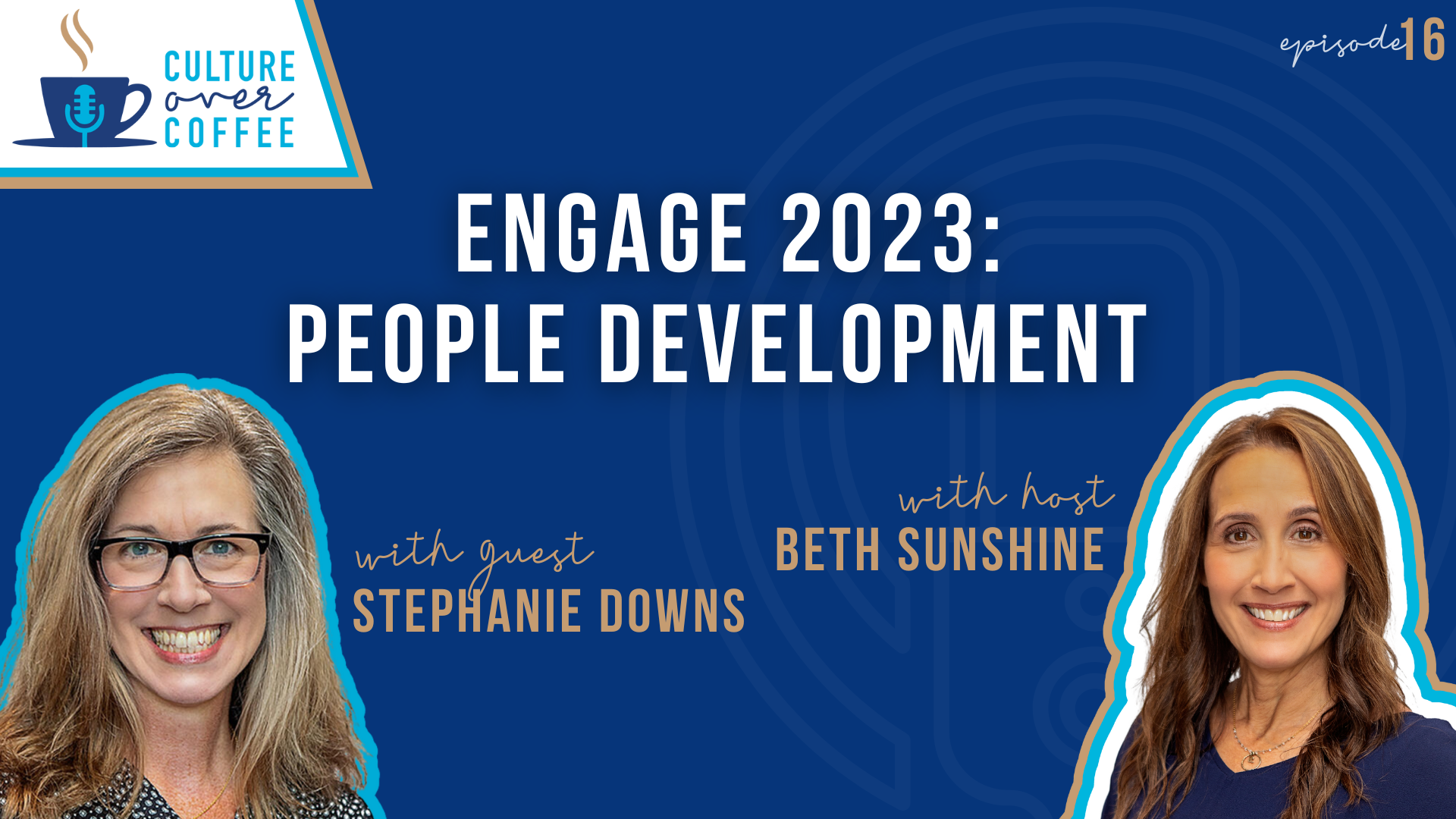






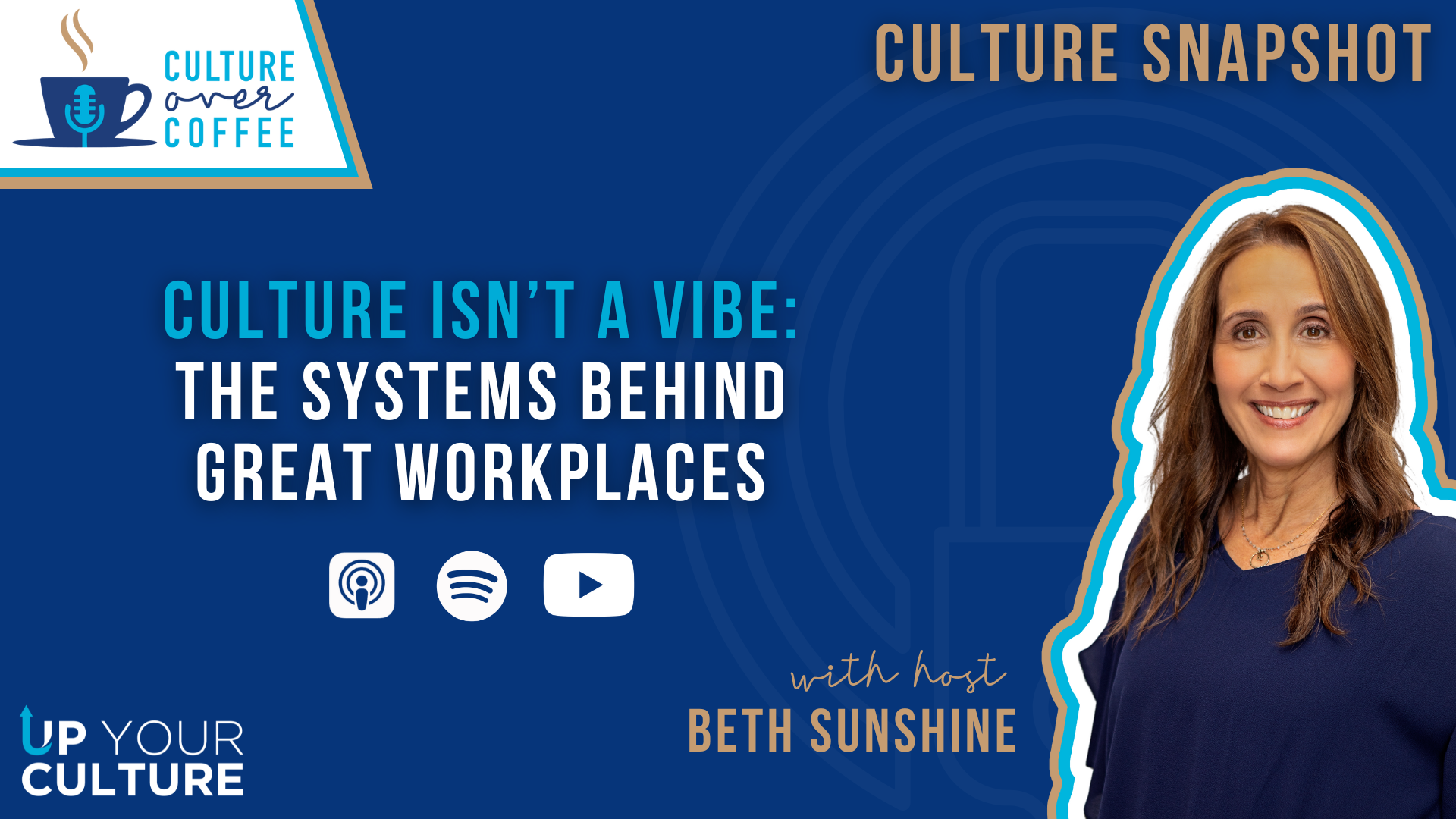
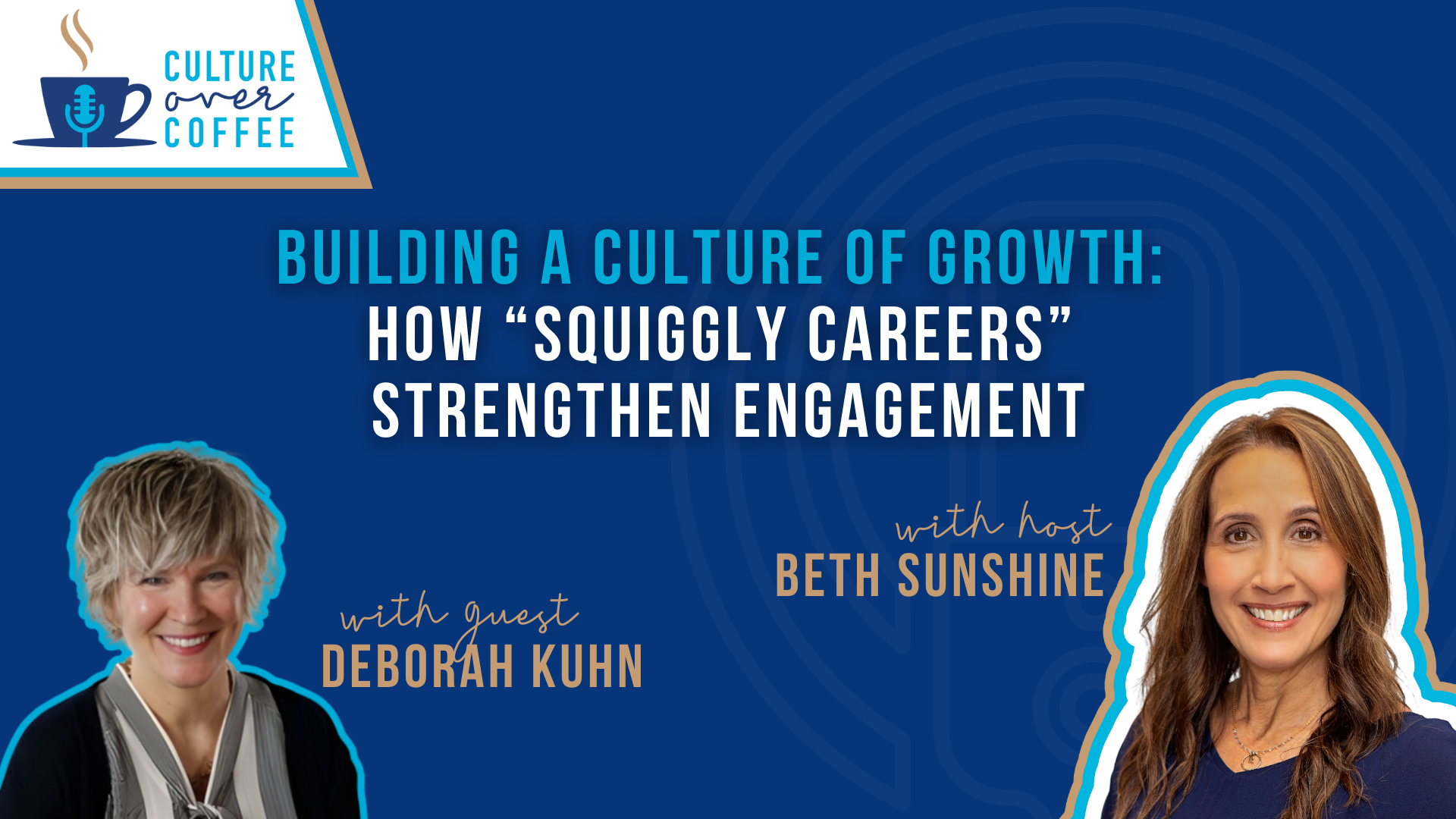
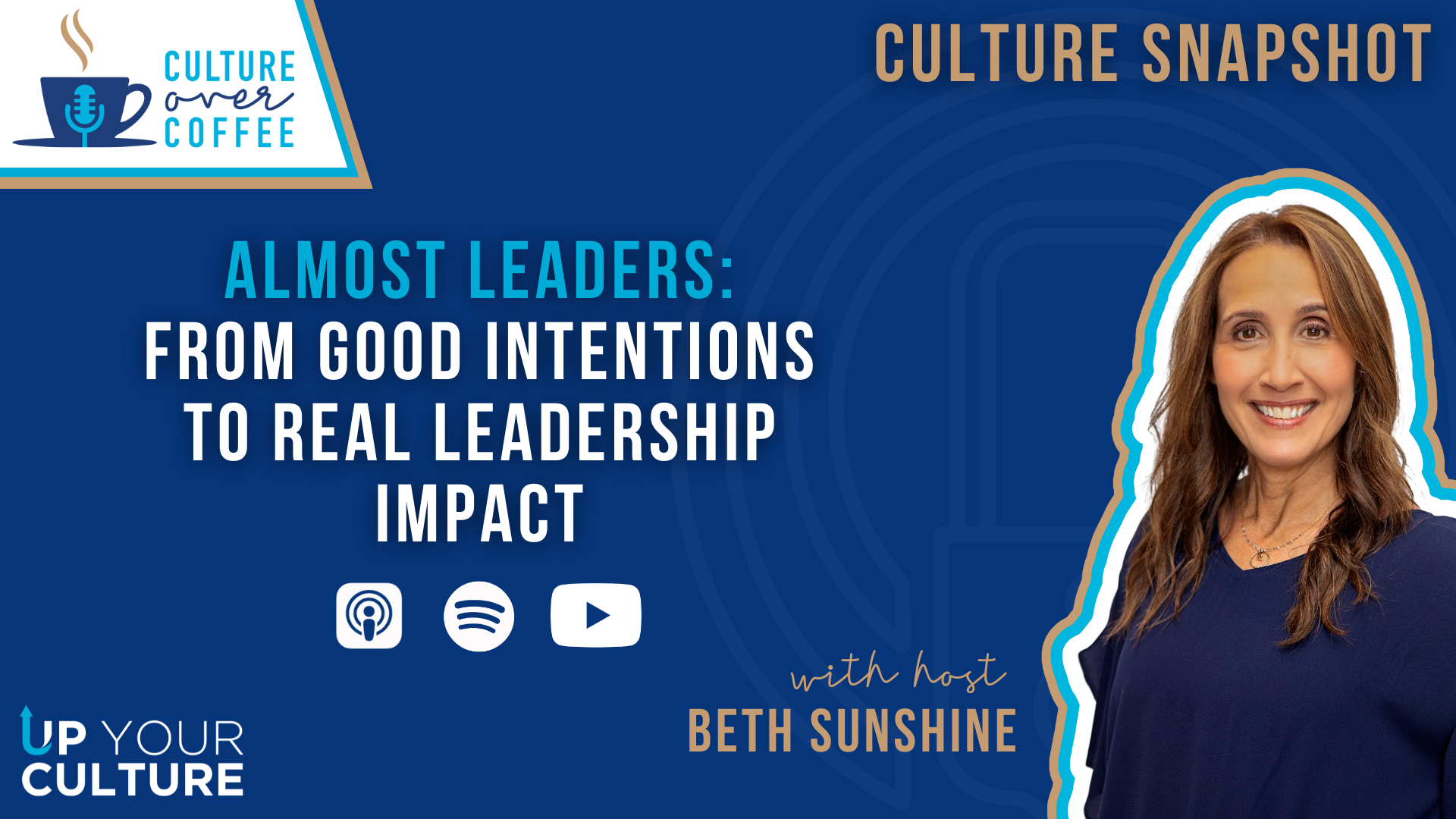

Leave a Comment